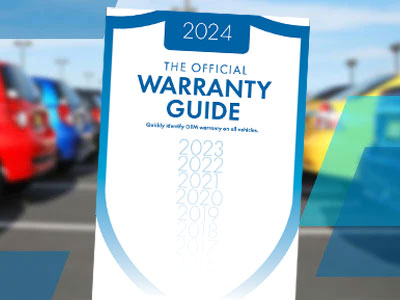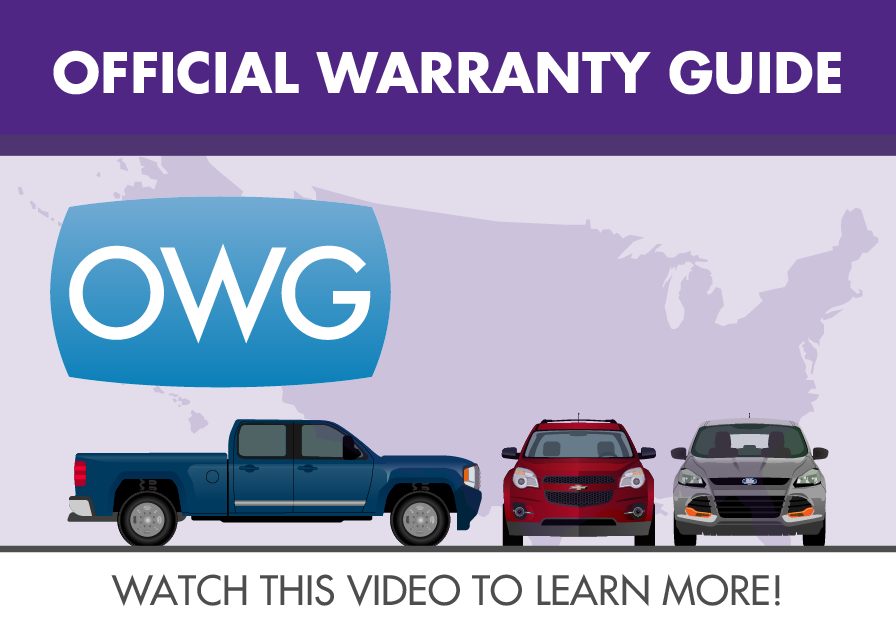OEM Warranty Coverage on Pre-Owned Vehicles

Used car dealers, franchised dealers, managers, sales people, lease companies, auto auctions, and independent repair facilities are making costly mistakes when it comes to OEM warranty coverage on used vehicles.
New Car Dealerships
New car dealerships often fail to realize the extent that used cars and trade-ins may be covered by OEM new-vehicle warranty. In fact, used vehicles in anyone’s inventory, franchised or not, may be covered by the remaining portion of an OEM warranty.
There are normally two types of warranty; that which is on the “vehicle” or that which is on the “owner.” Before you perform any warranty work you must be certain of which type of warranty applies and whether transfer requirements (if applicable) have been met.
A used car inventory is considered “neutral” since titles have not been registered to a retail customer. For example, certain 2009 Chrysler vehicles are covered with a lifetime “owner” warranty. This coverage is only valid to the original owner, not transferable. A 2015 Mitsubishi has a 10/100,000 transferable powertrain warranty. Subsequent owners receive the balance of the new vehicle limited warranty of 5/60,000. For some manufacturers, the warranty cannot be transferred beyond the second owner.
Repairing OEM defects under warranty is permissible. What the OEM frowns upon is reconditioning a vehicle to add value to it without the problem being a true OEM defect.
Used Car Dealers
Used car dealers can get OEM defects repaired under warranty, but must provide proof to a franchise repair facility that a vehicle has a valid warranty and that the repair is of a warrantable nature. Most franchise dealers would not turn the extra work away. Dealers also have a way to verify warranty eligibility by running a VIN through their OEM communications computer.
Used Car Managers
Used car managers make the mistake of packing after-market warranties on the vehicle when the OEM’s warranty is still in effect. Check your used car stock for “Buyer's Guide” window stickers on late model vehicles that are checked “no warranty.” In many cases at least some portion (emissions, corrosion) of the OEM’s warranty remains.
The Official Warranty Guide lists all OEM phone numbers.
Used vehicle managers should be aware of any OEM recalls or special policies that are available for repair at “no-charge”. Some items with longer warranties like emissions, corrosion, or safety belts and inflatable restraint systems, normally do not require a deductible to be paid. Extended powertrain warranties may require a deductible. Whenever possible, call the manufacturer’s customer assistance centers for help or clarification.
Check your vehicles to determine what balance of the warranty applies. Check the VIN’s to see if any campaigns are open on the vehicle. If repairs need to be made to your stock vehicles that are legitimate OEM defects, then contact the service manager for approval, or make an appointment at a franchised dealer.
Used car retailers must attach a “Buyer’s Guide” sticker to a vehicle’s window. The sticker includes warranty information and reminds the shopper to ask the dealer whether an inspection by an independent technician is allowed. The sticker also warns consumers to get dealer promises in writing.
Yet another side note is in order. Pursuant to specific provisions of Federal law, a buyer’s guide is actually considered a part of the contract and its terms are incorporated by reference. There is even a required notation on the face of the contract to this effect. Therefore, not only should a customer be receiving a copy, but, technically a copy should be physically attached to the original copy of the contract when it is assigned to a financial institution. This would literally insure that the financial institution, as the holder of the contract, has a full and complete copy of the written contractual agreement between the parties.
I walk into dealerships and see “Buyer’s Guide” window stickers on late model cars that are checked “No Warranty.” What a pity! Be sure to note correctly what balance of the OEM warranty remains. This can be powertrain, basic, emissions, or lengthy corrosion perforation. This will keep after-hour tire kickers from being turned-off by “As-Is” noted on the sticker.
Last of all, use the fact that a OEM warranty exists to help sell used cars. Franchise dealers should also pull the service history folders to sell the point that all prior work was done in your shop and that regular maintenance has been performed. Explain the advantages to the customer of having the remaining OEM coverage.
Knowing and explaining the warranty to the customer will help to avoid any misrepresentations, minimize the chances that you will need to make an out-of-pocket policy adjustment, and may prevent a costly lawsuit.
Buyers And Auctions
Buyers and auctions should consider whether any OEM warranty is in effect when appraising vehicles. If a vehicle has an OEM warranty, obviously its intrinsic value is higher.
Service Departments
Service Departments should be aware of what repairs on non-franchised vehicles might be covered by OEM warranty. There is nothing worse than losing a customer because they later found that the work that they paid you for, would have been covered if performed at a franchise facility.
If this ever happens, explain the mistake to the customer and have them take their original receipts to a franchised dealer (hopefully where they purchased the vehicle). The dealership has the ability to reimburse the customer at OEM rates. You may want to absorb any difference to save the customer.
Make Money, Not Mistakes with OEM Warranties.
Whether you’re in the market to buy, sell, or repair used vehicles, you can see that OEM warranties can save you money. The secret is to know what OEM warranties cover and to remember that the OEM may provide assistance, even after a basic warranty no longer applies. The alternative is to ignore the value of warranties and let your competition get all the great deals.
Top 10 Mistakes With OEM Warranty And Used Vehicles
Mistake # 1 - Buyers and auctions miss out on great deals by not considering whether any OEM warranty is in effect when appraising vehicles.
Mistake # 2 - Used car managers don’t pay attention to OEM campaigns, special policies, or warranty extension that are available for repair at “no charge.”
Mistake # 3 - Some dealerships don’t know what to do with vehicles under warranty if the brand is not their own.
Mistake # 4 - Service managers use the dealership’s cash to repair OEM defects.
Mistake # 5 - Service Manager’s underestimate the possibility of the OEM repairing a vehicle, even after the warranty has expired.
Mistake # 6 - Used car managers make the mistake of packing after-market warranties on vehicles that still have some OEM warranty.
Mistake # 7 - Used car retailers get fined for mislabeling stickers.
Mistake # 8 - Sales people don’t know which type of warranty applies to a vehicle.
Mistake # 9 - Sales people delay the transfer of a warranty.
Mistake # 10 - You work with used vehicles so you don’t take advantage of OEM warranties.
The Official Warranty Guide® details every OEM’s warranty guidelines, deductibles, special policies, and other pertinent information. To order your copy call 1-800-852-6298.




